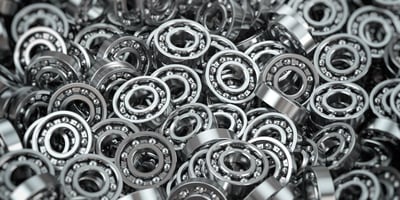One of the most common types of industrial coatings is ECTFE coatings, which are sold under the Halar brand name. Solvay Solexis is the only company which manufactures ECTFE, which is basically a type of plastic that’s melt processable and semi-crystalline. The material used to make these coatings has a chemical structure of one to one with alternating copolymers of chlorotrifluoroethylene and ethylene. This makes Halar coatings perfect for many different kinds of applications. Here are the most basic properties of ECTFE or Halar coatings.
- High impact strength
- Resistance to many common chemicals
- Resistance to corrosion, even over a wide range of temperatures (76 degrees Celsius to 150 degrees Celsius)
- High resistivity
- Low dielectric constant.
- Great cryogenic properties.
ECTFE coatings are used in a variety of different applications. Probably their most common application is as a coating where the goal is to reduce friction in places where there is a lot of friction, especially if dimensional stability is needed. You’ve probably seen ECTFE coatings on bearings, wire, cable, valve seats, and in other applications. Other common uses include lining scrubbers and pipes in the paper industry and inside of rotomoulted tanks which hold very reactive chemicals.
Also ECTFE is commonly used for primary insulation and jacketing and in the manufacture of gaskets which are used for the storage of various propellants used in the aerospace industry, like liquid oxygen. It is also widely used throughout the chemical industry, especially in processing where it is often the coating used for the exhaust duct and other processing equipment. Halar coatings provide an exceptionally smooth surface, which reduces the risk for the development of pinholes in the coating.
Halar coatings can stand up to any solvents or accides / bases that have a pH of 1 – 14. Some of the chemicals they can resist include nitric acid, ozone, hydrogen peroxide, sulfuric acid, hydrofluoric acid, and ammonium hydroxide.
This product is sold in a variety of ways, including nonwoven rollgoods, rods, sheets, and bars. It bonds rather easily to surfaces using epoxy resin or other fluoropolymers. In some ways it does bear a resemblance to Teflon™, although it is usually more expensive and melts at a lower temperature than Teflon™ does.
Whenever you go about selecting a coating for your project, it is essential that you speak with a professional. ECTFE is certainly a great option in many situations, but there are plenty of other coatings that may work better for what you need. Only an expert who works with a variety of industrial coatings will know if Halar coatings are right for your application. It is definitely worth the time to check with an expert before you choose any coating. Also make sure that the applicator you select is certified to apply Halar coatings.
Let the experts at Toefco answer all of your questions about ECTFE coatings. They can engineer coatings precisely to your specifications, and they’re ISO 9001 certified. All of their projects begin with a consultation with their customers so that they can understand what the coating will be used for. Then the engineered coatings are specifically blended to meet the performance properties the customer needs. Toefco offers flexible volumes so that they can offer competitive pricing.
To learn more about ECTFE coatings, call us at 888-912-5921 or ask an industrial coating engineer.

